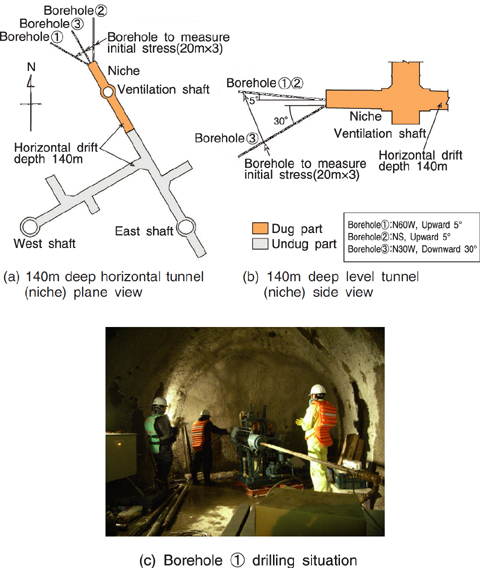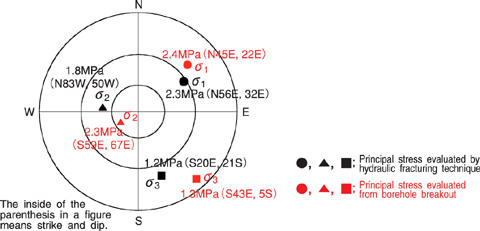
Fig.2-18 Borehole drilling at initial stress measurement position

Fig.2-19 Measured initial stress (Schmidt net lower hemisphere of the principal stress)
Fig.2-20 Comparison with the initial stress estimated in Phase1
The Underground Research Laboratory (URL) has been conducting a research project in Horonobe-cho, Hokkaido. This project aims at improvement of the reliability of technologies for geological disposal of high level radioactive wastes. It started in 2000, and the surface-based investigation phase was completed in 2005. Now it has shifted to the construction phase2 (investigation during construction of the underground facilities).
In the surface-based investigation phase1, the area of about 3 km×3 km around URL in the Hokushin district, Horonobe-cho was selected as the main research area, and geophysical exploration, geological survey, borehole survey, etc. were carried out in this area. In general, initial stress due to crustal movement and overburden pressure has been taking place underground here. In designing underground structures, it is necessary to measure initial stress around underground structures. Therefore, estimation of initial stress distributed in the URL area has been attempted during surface-based investigations in order to design URL.
In investigation during construction of the underground facilities, the updating and check of the validity of initial stress estimations made during surface-based investigations is one of the main issues. Thus, three boreholes were made from the niche (GL-140 m) of ventilation shaft shown in Fig.2-18, and a three-dimensional evaluation of the initial stress in Koetoi Formation was done by the method called hydraulic fracturing. Breakout (spalling) of the walls of the boreholes due to the stress concentration was detected on plastic films wrapped on an impression packer inserted in the borehole. Then, analysis of the borehole breakout was performed to estimate in situ the orientation and magnitude of stress.
The measurement result of initial stress is shown in Fig.2-19. Initial stress was broken down into principal stress σ1 (major principal stress), σ2 (intermediate principal stress), and σ3 (minor principal stress), and comparatively good coincidence in distribution of the direction of the principal stress evaluated by the two above methods was observed. Although the magnitudes of principal stress σ1, σ2, and σ3 found by the surface based investigation and the impression packer were 2.3, 1.8, 1.2 MPa and 2.4, 2.3, 1.3 MPa, respectively and σ2 values were somewhat different, general agreement was obtained. Fig.2-20 shows the result of the horizontal initial stress obtained from the borehole investigation (HDB-1, 3, 6, 9, 11 holes) carried out in the past, and the result obtained from the present underground test. Fig.2-20(d) shows the relation between the magnitudes of the horizontal principal stress, and depth. The Fig.2-20(e) shows the relation between the direction of the maximum horizontal principal stress, and depth. From this result, although the magnitudes of the maximum horizontal principal stress obtained here are mostly in agreement with the overburden pressure, they are slightly smaller than the past results. Moreover, the direction of the maximum horizontal principal stress had been found to be east/west in general. However, the present test showed that the direction was 25°or 43°counterclockwise from east/west. To gain data to explain this difference, initial stress measurements in the pressure at the depth 140 m (not counting the niche) in Koetoi Formation, and pressure at the still deeper depth for the Wakkanai Formation will be carried out.
<Previous: 2-9 | Next: 3 Nuclear Fusion Research and Development >